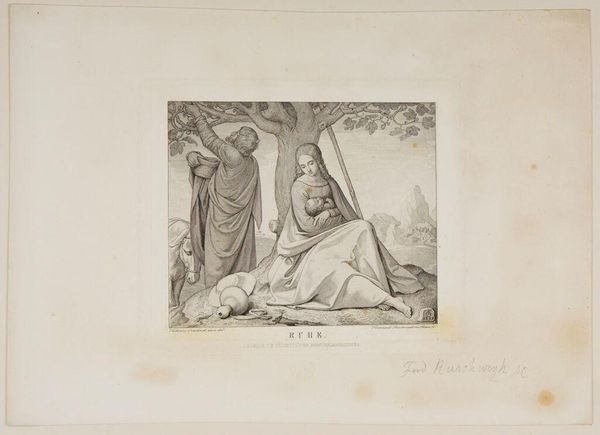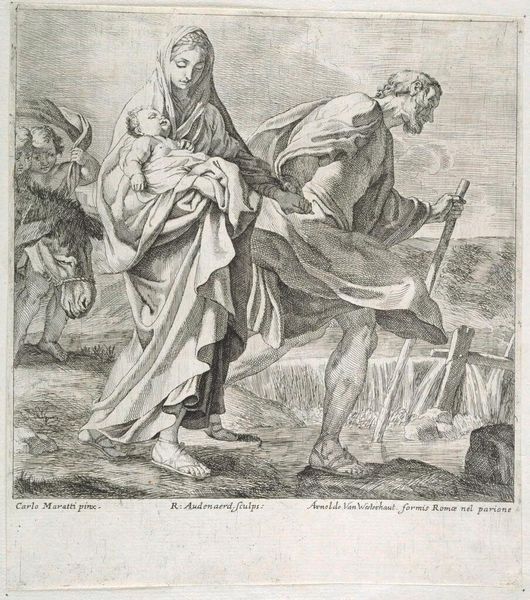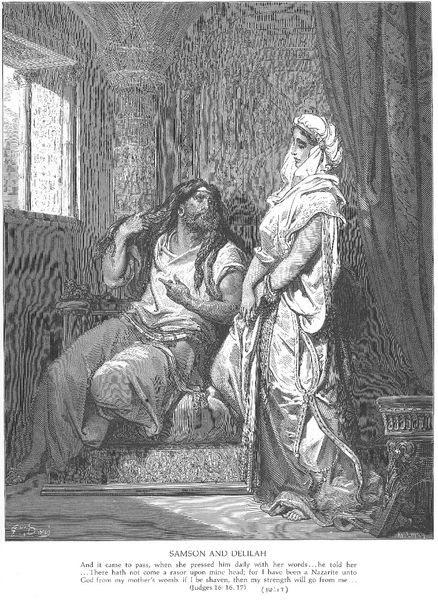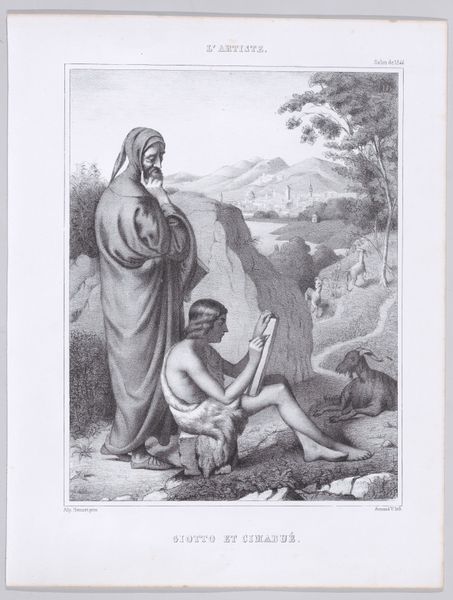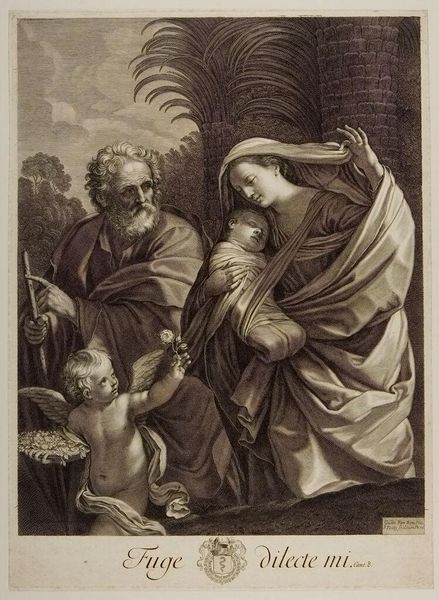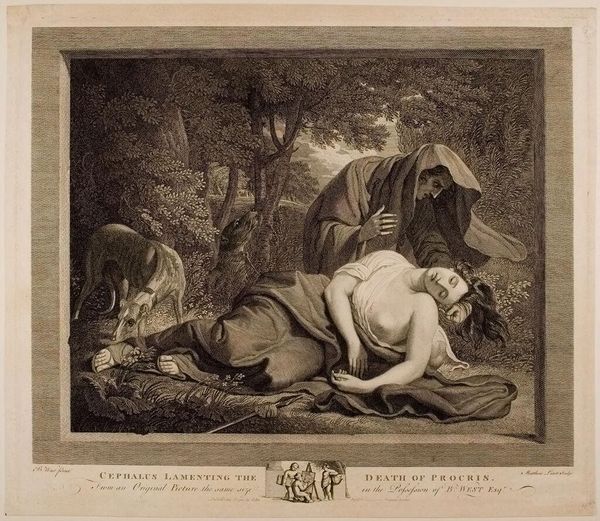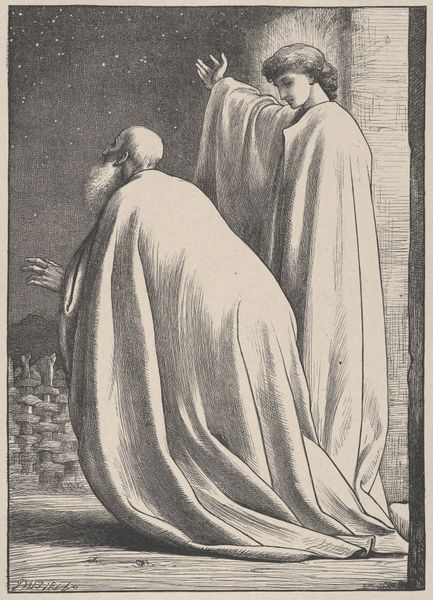
Copyright: CC0 1.0
Curator: This is Luigi Calamatta's "Bajazet et le Berger." There's no date on this, but Calamatta lived from 1801 to 1869. What's your immediate take? Editor: Stark contrasts. The starkness hits first: one figure regal, rigid, draped in finery; the other almost nude, reclining, seemingly lost in music. It feels staged, like a morality play in monochrome. Curator: Right? The materiality is intriguing. Look at the engraving—the textures he coaxes from the metal are quite remarkable. The precision in the fabric folds versus the softness of the skin... Editor: Definitely a labor of love. I see the king's garments reflecting wealth and power, each etched line a testament to meticulous craft. The shepherd's flute, meanwhile, seems almost… functional, less about display. Curator: I get the feeling it's about seeing beyond appearances. The shepherd's simplicity perhaps embodies a truer form of power. Editor: Perhaps. Or maybe it's a commentary on the divisions of labor inherent in artistic production itself: the artist's skill rendered invisible through the finished piece. Curator: So, a shepherd's tune versus the king's crown, etched into a plate. Food for thought! Editor: Indeed, it reveals how art can both reflect and obscure the social relations of its making.
Comments
No comments
Be the first to comment and join the conversation on the ultimate creative platform.




